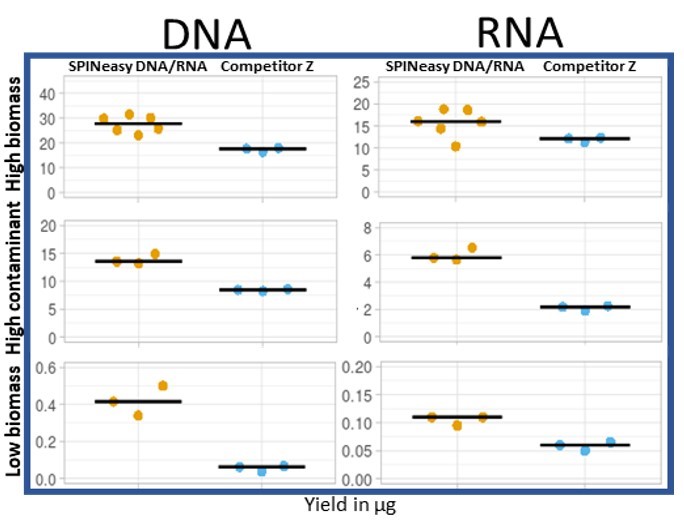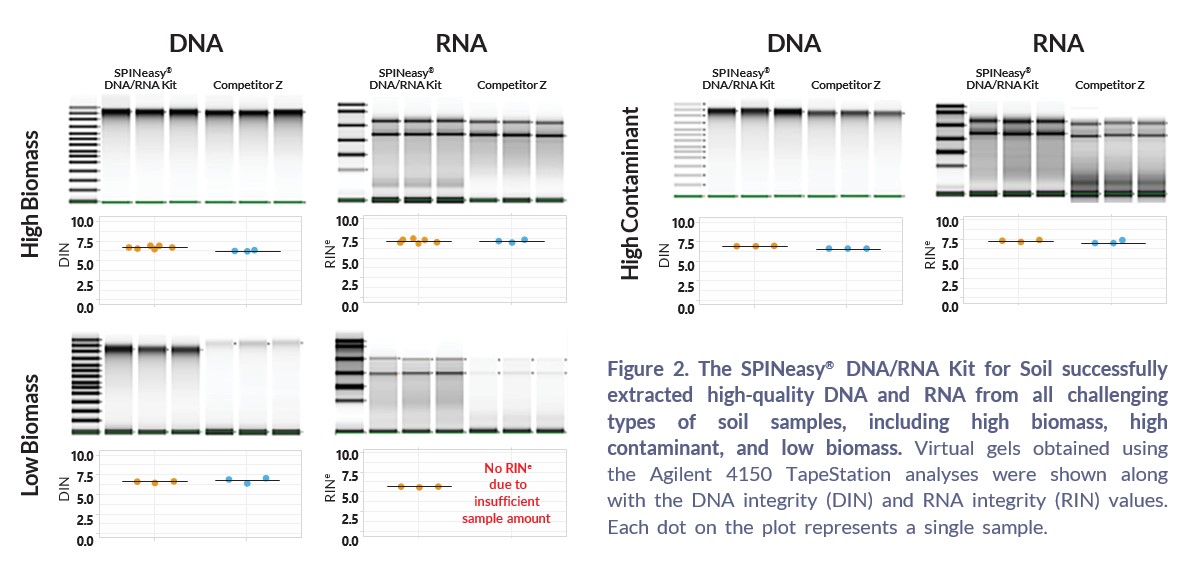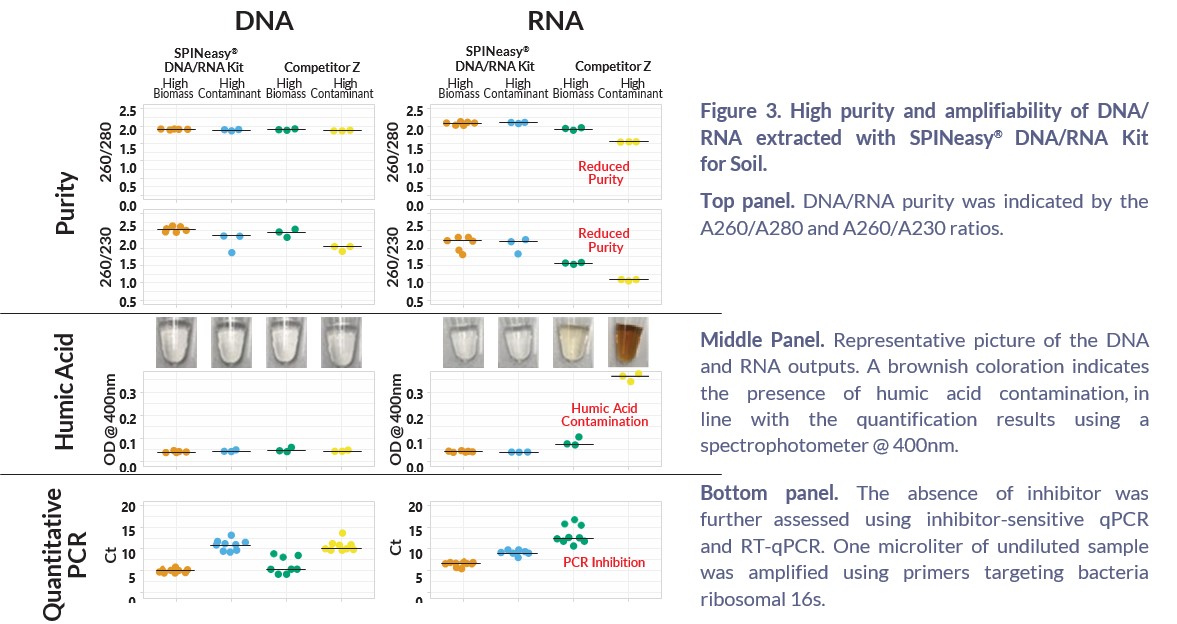Description
The SPINeasy® DNA/RNA Kit for Soil integrates our proprietary inhibitor removal and spin column technology for selective binding of DNA (blue column) and RNA (white column) from a single soil sample. Humic acids, heavy metals, and other aromatic components are among the most notorious PCR inhibitors found in soil samples, leading to false negative or inaccurate results. Non‑optimized nucleic acid extraction protocols often co‑purify inhibitors.
The SPINeasy® DNA/RNA Kit for Soil allows for fast and simultaneous isolation of pure microbial genomic DNA and RNA from challenging soil samples, including those with low biomass or those that are highly contaminated. The extracted nucleic acids lack contaminants and are suitable for use in downstream applications, such as qPCR, RT-qPCR, and sequencing, without the need for further inhibitor removal steps.
Performance Data
Nucleic acid was extracted from challenging soil samples: High biomass, High contaminant, and Low biomass. The SPINeasy® DNA/RNA Kit for Soil kit consistently delivered a higher amount of DNA and RNA than the commercially available competitor Z.

Figure 1. The SPINeasy® DNA/RNA Kit for Soil delivers higher nucleic acid (DNA & RNA) yields compared to Competitor Z. Three types of soil samples (250 mg each) were used for DNA/RNA extractions. Yields were measured by fluorometric quantification. Each dot on the plot represents a single extraction.

The SPINeasy® DNA/RNA Kit for Soil is designed to tackle challenging samples with large amount of contaminant. When DNA/RNA samples obtained from high biomass/contaminant soils were examined using UV spectrophotometer, only the samples extracted with SPINeasy® DNA/RNA kit for Soil showed optimal A260/A280 ratios (~1.8 for DNA, ~2.0 for RNA), as well as the highest A260/A230 ratios (Figure 3, top panel). Unlike the RNA extracted using SPINeasy® DNA/RNA Kit for Soil, the RNA samples obtained using the competitor Z displayed a brownish coloration for all soil types, this is in line with the quantification result of the humic acid level using a spectrophotometer @ 400 nm (Figure 3, medium panel). The phenomenon was especially significant for the challenging high contaminant soil with overall contamination levels of up to 10x higher for the competitor Z as compared to SPINeasy® DNA/RNA Kit for Soil (Figure 3, medium panel). The level of PCR inhibitors in DNA/RNA extracted from high biomass/contaminant soils was also examined using the inhibitor-sensitive qPCR and RT-qPCR. RNA samples obtained from competitor Z kit showed significant PCR inhibition, in line with the purity and humic acid level data. The difference was especially drastic for the samples obtained from high contaminant soil in which a complete inhibition was observed (Figure 3, bottom panel).
Overall, these results indicate a superior inhibitor removal ability of SPINeasy® DNA/RNA Kit for Soil.



